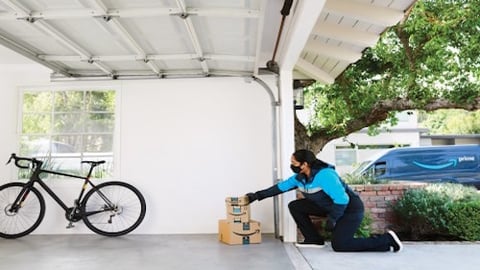Amazon's Online Pharmacy to Rival CVS, Walgreens and Walmart
Amazon took a huge step to gain prescription drug market share with the highly anticipated launch of an online pharmacy following its 2018 acquisition of mail-order service provider PillPack.
With its long-awaited move into pharmacy, Amazon vows to bring affordability and simplicity to a prescription drug world it has described as inconvenient and confusing. Despite that characterization, Amazon Pharmacy will provide functionality similar to what already exists in the market from leading pharmacy chains, with some differences Amazon views as notable. For example, Amazon will accept most insurance plans and customers can complete a transaction on a desktop or mobile device through the Amazon app. However, the company will provide its huge community of Prime members free two-day delivery. It may also eventually offer voice-ordering capability through virtual assistant Alexa, but no indication was given in the pharmacy launch announcement that such a service is in the offing.
Another feature of the service is access to online self-service help, combined with phone access to customer care at any time, including pharmacists who are available around the clock.
Amazon said that it won’t deliver prescriptions for Schedule II products which include commonly abused opioids.
In addition to the online pharmacy launch, Amazon has introduced an Amazon Prime prescription-saving benefits that it said will help Prime members save money at the Amazon pharmacy or 50,000 other participating pharmacies nationwide. The Amazon Prime prescription savings benefit saves members up to 80% off generic and 40% off brand-name medications when paying without insurance, according to the company.
The saving benefit is administered by Inside Rx, a subsidiary of Evernorth, which in turn is a subsidiary of Cigna Corp. Bloomfield, Connecticut-based Cigna launched Evernorth in September to “accelerate delivery of innovative and flexible solutions to meet the diverse needs of health plans, employers, and government organizations.”
“We designed Amazon Pharmacy to put customers first – bringing Amazon’s customer obsession to an industry that can be inconvenient and confusing,” said TJ Parker, VP, Amazon Pharmacy. “We work hard behind the scenes to handle complications seamlessly so anyone who needs a prescription can understand their options, place their order for the lowest available price, and have their medication delivered quickly.”
Amazon signaled its interest in the prescription drug world in June 2018, when it acquired mail-order service provider PillPack. The significance of that deal at the time was less about the volume of business PillPack transacted than about the fact that since its founding in 2012, PillPack had done the heavy lifting to secure regulatory approval to operate in all 50 states.
“PillPack has provided exceptional pharmacy service for individuals with chronic health conditions for over six years. Now we’re expanding our pharmacy offering to Amazon.com, which will help more customers save time, save money, simplify their lives and feel healthier,” said Doug Herrington,SVP of North American consumer at Amazon.
Amazon will continue to operate the PillPack branded service, which is geared to those who take multiple daily medications and prefer the simplicity of pre-sorted dose packaging, which can aid with compliance among those taking large number of prescriptions.
“We understand the importance of access to affordable medication, and we believe Prime members will find tremendous value with the new Amazon Prime prescription savings benefit,” said Jamil Ghani, VP, Amazon Prime. “Our goal is for Prime to make members’ lives easier and more convenient every day, and we’re excited to extend the incredible savings, seamless shopping experience, and fast, free delivery members know and love with Prime to Amazon Pharmacy.”
Seattle-based Amazon is No. 2 on The PG 100, Progressive Grocer’s 2020 list of the top food and consumables retailers in North America, while its wholly owned subsidiary, Austin, Texas-based Whole Foods, is No. 24.






